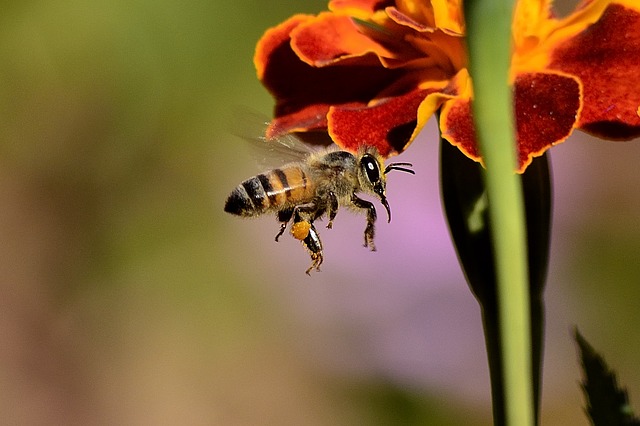Bumblebees can do more than pollinate flowers. A new study has found that they are able to sense the weak electric fields that flowers generate, using the tiny hairs on their bodies, NPR reports.
Gregory Sutton, a Royal Society University Research Fellow at the University of Bristol says, “The bumblebees can feel that hair bend and use that feeling to tell the difference between flowers.”
The common perception has been that animals were only able to sense electric fields in the water, like sharks and eels do. The platypus and spiny anteaters are the only land creatures known to have the abilities to do the same, but have to be submerged in water in order for it to happen.
A few years ago, Sutton and his colleagues found that bumblebees were able to sense electric fields in the air. “There is, all the time, a background electric field in the atmosphere,” Sutton says. “Any plant that’s connected to the ground will generate its own electric field just by interactions with the atmosphere.”
Sutton decided to test if the bumblebees could sense and use these electric fields in some way. His team came up with the idea of using artificial flowers that were almost identical. They put 30 volts in half of the flowers and filled them with sugar water. The other half was filled with a bitter liquid. The researchers observed that eventually, the bees learned to go to the flowers that were charged with 30 volts.
When they turned off the electricity, the bees lost the ability to tell the difference between the flowers and began going at them randomly, showing that they did rely on these electric fields.
The next step was to show how they were able to sense these fields. Sutton says, “We used a laser beam that could measure small motions of an antenna or a hair, and that’s how we measured how much the air and the antenna moved in response to an electric field.”
The researchers also placed a very fine electrode wire into the nerve at the socket of the bottom of a hair to record the activity that was going on. Sutton explains,
They’ve got these really fuzzy hairs all over their body, and when they approach something with an electric field, that electric field will bend the hairs on their body.
This bending generates a nerve signal.
These findings suggest that bumblebees can sense electric fields produced but flowers from nearly 22 inches away under ideal conditions. Under normal circumstances, it’s more like 4 inches.
“I’m very excited by this because these little mechanically-sensitive hairs are common all over the insect world,” Sutton says. “I think this might be something we see in more insects than just bumblebees.”
Further studies are needed, but all things considered, it might even be possible that bumblebees can detect electric fields in things other than flowers, which might be technologically useful in the future.
The study was published in the Proceedings of the National Academy of Sciences.
























